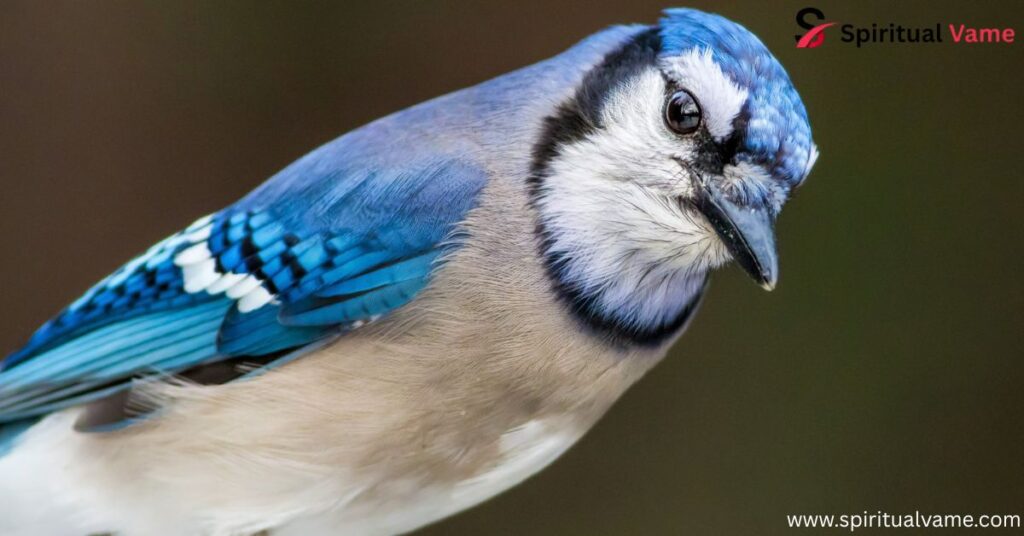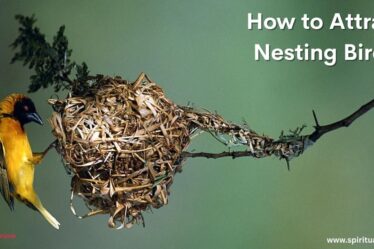
When you look out into your backyard in the USA, there’s a good chance you’ll spot either a robin or a blue jay. These birds are common across much of North America, but they couldn’t be more different once you take a closer look. From their plumage and vocalizations to their intelligence and nesting habits, robins and blue jays each bring their own unique beauty and personality. Understanding these differences helps bird lovers enjoy a deeper connection with their feathered visitors.
Robins are known for their rust-colored breasts, soft grayish-brown backs, and subtle markings, making their appearance simple yet elegant. In contrast, blue jays steal the spotlight with their bold crest, bright blue feathers, and sharp black and white markings. These two species are both omnivorous and adaptable, but their behavior, communication, and even their way of raising young are entirely different stories.
Robin vs. Blue Jay
Though they seem very different at first glance, robins and blue jays do share some similarities. Both birds are found across most of the United States and are comfortable living near people, making them common in backyards, parks, and wooded areas. They are also omnivorous, eating a mix of insects, berries, and seeds, and both build nests in trees, though their methods vary greatly.
However, their behavior sets them apart. Robins tend to be more solitary, quietly hopping across lawns looking for earthworms, while blue jays often travel in flocks and use loud calls to communicate. Robins have a sweet, melodious song with a flute-like tone, while blue jays are noisy and capable of mimicry, often imitating hawks to scare off other birds. When it comes to territorial behavior, robins defend small areas, but blue jays are more aggressive and will chase away predators or rivals.
Key Differences Between Robin and Blue Jay
Vocalization
One of the easiest ways to tell a robin and blue jay apart is by their vocalizations. Robins sing a clear, repetitive, and melodious song, usually heard early in the morning. Their whistles and chirps form lovely patterns with distinct phrases and a flowing rhythm. Blue jays, on the other hand, make a variety of harsh squawks, clicks, and whirrs. They are experts in mimicry, able to mimic the sounds of other birds, including the terrifying screech of a hawk, which they use as an alarm call.
Coloration
In terms of coloration, robins have a reddish-orange breast, a gray back, and a white belly. Their look is soft and gentle, with subtle plumage and brown tail feathers. Blue jays are flashy and bold, with vibrant blue feathers, white undersides, and black markings on their necks and faces. Their blue crest stands tall on their head, adding to their striking appearance. This colorful contrast is one of the easiest ways to tell the two birds apart.
Learning Abilities
When it comes to learning abilities, blue jays stand out for their high intelligence and cleverness. They display impressive problem-solving, memory, and adaptability. They often practice caching, which means they hide food like acorns and peanuts to eat later. Robins, while smart, are more instinct-driven and don’t show the same level of observational learning or innovation as jays. Still, robins are excellent at recognizing safe nesting spots and foraging effectively.
Distinctive Markings
Each bird has unique markings that make it easy to tell them apart. The robin’s most famous feature is its orange breast, with a grayish-brown back and a small white eye ring. Blue jays are much more dramatic in their looks. They have a bold black necklace, a tall blue crest, and white feathers streaked with black and blue. These distinctive markings give them a showy presence in any tree.
Mimicry

Mimicry is a skill that blue jays have mastered. They can copy the cries of hawks to protect their territory or scare off competitors. This kind of communication shows their high cognitive ability and makes them one of the most vocal birds in North America. Robins don’t mimic other birds, but they do have their own flute-like song that many people recognize.
Feeding Habits
Both birds are omnivorous, but their feeding habits are different. Robins prefer earthworms, insects, and berries. They are often seen on the ground, pulling worms from the soil. Blue jays have a wider diet. They eat nuts, grains, corn, eggs, larvae, and even small animals. Their strong beaks allow them to crack acorns and dig up invertebrates. Jays will also raid other birds’ nests for eggs and nestlings, a behavior rarely seen in robins.
Nesting Preferences
Robins usually build their nests in trees, shrubs, or under eaves. They prefer open spaces but need some cover for protection. Blue jays, however, choose more elevated, concealed spots in trees. Their nesting strategy is all about insulation, structure, and protection from predators. Robins build with grass, twigs, and mud, while blue jays use a wider variety of nesting materials, including feathers and even paper.
Nesting Material
The difference in nesting material used by these birds is quite noticeable. Robins craft cup-shaped nests from mud, grass, and twigs, making them sturdy yet simple. These nests are often found on ledges or branches. Blue jays use twigs, bark, and leaves, but may also add unusual items like string or plastic. Their nests are usually well-hidden and better insulated, showing their clever use of resources.
Territorial Behavior
Robins are mildly territorial, mostly during nesting season. They defend their space with soft calls and posturing. Blue jays, on the other hand, are highly aggressive when it comes to territory. They will chase away other birds, scold intruders with loud squawks, and may even dive-bomb predators to protect their nest or food stores. Their boldness is part of what makes them so successful in urban environments.
Migration Patterns
Robins migrate in large groups during the fall, though many remain in warmer parts of the USA during winter. Their migration patterns are predictable and seasonal. Blue jays are less consistent. Some migrate, others don’t, and scientists still don’t fully understand their choices. This unpredictable behavior shows their adaptability to different environments and food availability.
Behavior in Winter
In winter, robins change their diet, focusing on berries like juniper and holly. They may travel in flocks and become more social. Blue jays use caching to survive the cold. They store food like nuts in the fall, using their strong memory to find it later. This winter adaptation gives blue jays an edge in tough climates.
Social Behavior
Socially, these birds are very different. Robins are mostly solitary, except during breeding or while migrating. They tend to avoid other birds and focus on foraging alone. Blue jays are sociable and often move in family groups or flocks. They show a clear hierarchy in their community, with dominant birds leading the way. Their interactions include cooperative defense and complex communication.
Song Complexity
Robins have a beautiful, structured song made up of repeating phrases and syllables. It sounds sweet and calm, especially in the morning. Blue jays, while less musical, have more varied vocalizations, using chirps, chucks, whines, and mimicry to communicate. Their song complexity lies in their ability to imitate and adapt.
Eating Preferences

Robins like insects, fruits, and worms. They are often seen hopping across lawns hunting for food. Blue jays enjoy a broader range of items like nuts, grains, caterpillars, beetles, and even meat. This diverse diet shows how flexible and opportunistic they are.
Size
Blue jays are slightly bigger than robins. On average, a blue jay measures about 11 inches, while a robin is closer to 10 inches. Jays are also heavier and have longer wings and tails, giving them more powerful flight and a more commanding presence in the air.
Range
Both birds cover most of the United States. Robins are found coast to coast and into Canada and Mexico. Blue jays are also widespread but more common in the eastern and central USA. Each bird adjusts well to various habitats, from deep forests to suburban yards.
Nesting Season
Robins begin nesting early in spring, often having two or three broods per year. Blue jays nest a bit later, usually in late spring or early summer. Their longer nesting season gives both species a chance to raise multiple sets of fledglings.
Egg Color
Robins lay smooth, bright blue eggs. Blue jays lay eggs that are pale green or brownish, often with speckles. These differences in egg color are another quick way to identify which bird built the nest.
Parental Care
Robins and blue jays both care for their young, but blue jays are more cooperative. Both parents feed and protect the chicks. In robins, the female does most of the incubation, while the male guards the area. Blue jays share duties more equally, which may be linked to their more social nature.
Mobility
Robins are more ground-focused, often seen hopping across lawns and roads. Blue jays prefer to move through trees, using their wings to travel high and far. They are more aerial and fast-moving compared to robins.
Intelligence
Blue jays are among the smartest birds in North America. Their skills include tool-use, problem-solving, reasoning, and imitation. They recognize faces and remember hiding spots. Robins are less complex, but they still show signs of adaptability, especially in nesting and foraging.
Predator Imitation
Only blue jays are known for predator imitation. They mimic hawk calls to scare other birds or create distractions. This shows high cognitive ability and a clever survival tactic.
Winter Adaptations
Robins adapt to winter by changing their eating preferences and becoming more social. Blue jays rely on their caching habits, finding hidden nuts they buried months earlier. Their strong memory helps them survive when food is scarce.
Urban Adaptability

Both species live well in cities and suburbs, but blue jays are especially good at adapting to urban environments. Their loud nature and flexible feeding habits make them common in parks, gardens, and even city streets.
Egg Clutch Size
Robins typically lay 3 to 5 eggs, while blue jays may lay 4 to 7 eggs per clutch. This gives jays a slight edge in terms of reproduction.
Lifespan
Robins usually live around 2 years in the wild, though some reach 6 years. Blue jays live longer, averaging 7 years, with some individuals reaching up to 17. Their longer lifespan is likely tied to their intelligence and adaptive behaviors.
Robin Vs Blue Jay – Comparison Table
| Feature | American Robin | Blue Jay |
| Coloration | Reddish-orange breast, gray back | Bright blue with white and black |
| Size | About 10 inches | About 11 inches |
| Vocalization | Melodious, flute-like song | Varied calls, mimicry, squawks |
| Nesting | Cup-shaped, open nests | Elevated, concealed nests |
| Diet | Insects, worms, berries | Nuts, insects, small animals |
| Intelligence | Moderate | High |
| Social Behavior | Solitary | Sociable, aggressive |
| Egg Color | Bright blue | Speckled green or brownish |
| Lifespan | 2-6 years | 7-17 years |
Conclusion
In the end, the robin vs bluejay debate shows how different these birds really are. Robins are calm and peaceful, while blue jays are loud and bold. From their plumage and calls to their nesting and feeding habits, they don’t share much in common. Still, both are fascinating in their own way.
If you love watching birds, the robin vs bluejay comparison helps you spot and enjoy their unique traits. Whether it’s the robin’s melodious song or the blue jay’s intelligence and mimicry, both offer something special. Understanding robin vs bluejay differences makes birdwatching more fun, engaging, and rewarding every single time.



